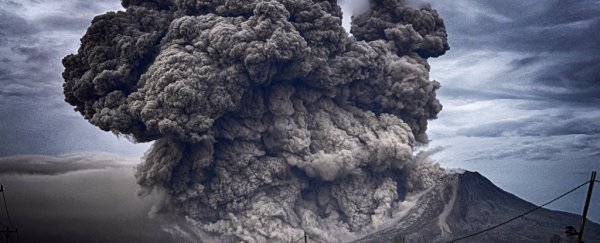Behold, the rumble of volcanic thunder.
No, this is not the sound of Thor in a rage. But its true source is just as epic: It comes from lightning within the ash clouds of a volcanic eruption.
People who have had the frightening experience of witnessing a volcano blow have described hearing a thunder-like "boom" echoing from above.
But it was difficult for scientists to distinguish those sounds amid the rest of the cacophony - the roar of hot gases gushing up from Earth's interior, the blasts of bubbles bursting, the sonic boom created when the shock wave from the eruption exceeds the speed of sound.
Then, in December 2016, the Bogoslof volcano in Alaska's Aleutian Islands began to rumble. And scientists from the US Geological Survey were listening.
Microphones positioned on a nearby island caught the upheaval, which lasted eight months. Listening back through the recordings, researchers were able to isolate several cracking sounds on 8 March and 10 June, 2017 - the signature of volcanic thunder.
Their findings were published last week in the journal Geophysical Research Letters. They also published audio clips from the eruption, sped up to reveal the quick cracks and pops of volcanic thunder amid the eruption's low-pitched rumble.
"If people had been observing the eruption in person, they would have heard this thunder," Matt Haney, the study's lead author and a seismologist with the USGS and the Alaska Volcano Observatory, said in a news release.
Many of the eruption plumes from Bogoslof gushed tens of thousands of feet into the sky, where they interfered with air travel.
In their study, Haney and his colleagues write that the thunder signals corresponded with the timing and strength of lightning signals from the eruption. In the future, researchers could use thunder as a proxy for volcanic lightning, which is produced by charged particles in the ash clouds.
Since more lightning is generated by bigger eruptions, detecting these flashes of light and rumbles of thunder is a vital tool for scientists aiming to protect people and planes.
"I expect that going forward, other researchers are going to be excited and motivated to look in their data sets to see if they can pick up the thunder signal," Haney said.
2018 © The Washington Post
This article was originally published by The Washington Post.
